The national flag of Somalia is a powerful and instantly recognizable symbol, embodying the nation's independence, unity, and its place within the broader African and Islamic world. Adopted on October 12, 1954, five years before Somalia gained full independence from Italy and Britain, its design was a forward-looking statement of national aspiration. Designed by Mohammed Awale Liban, a prominent Somali scholar, the flag’s simplicity and striking blue and white colors, coupled with its central star, convey deep historical and cultural meanings for the Somali people.
Design and Symbolism: A Celestial Beacon of Unity and Freedom
The flag of Somalia features a light blue field with a large, white, five-pointed star centrally placed. Each element is rich with symbolism pertinent to the nation's identity and history:
-
Light Blue Field: The predominant light blue color of the flag is a direct homage to the United Nations, particularly for its role in overseeing the Trust Territory of Somaliland (the former Italian Somaliland) during the period leading up to independence. This blue is often interpreted as representing the sky above Somalia and the Indian Ocean, which borders the country, signifying freedom and the vastness of the Somali lands. It also embodies the peaceful intentions of the nation and its desire for a calm and stable future.
-
White Star (Star of Unity): The large, white, five-pointed star, centrally positioned, is the most iconic element of the flag. It is officially known as the "Star of Unity" (Xiddigta Midnimada). Each of the five points of the star represents one of the five regions historically inhabited by the Somali people. These regions are:
-
Former British Somaliland
-
Former Italian Somaliland (which together formed the Somali Republic in 1960)
-
Djibouti (French Somaliland)
-
The Ogaden region (in Ethiopia)
-
The Northern Frontier District (NFD) in Kenya The Star of Unity thus powerfully symbolizes the aspiration for a unified Greater Somalia, bringing all ethnic Somalis under one banner. Its white color emphasizes peace and purity, reflecting the nation's desire for a peaceful realization of this unity.
Dimensions and Proportions:
The flag of Somalia adheres to a standard width-to-length ratio of 2:3. The central white star is geometrically placed, ensuring it is perfectly centered on the light blue field. The size of the star is proportionate to the overall flag, making it a prominent yet balanced feature. These precise proportions contribute to the flag's visual harmony and its easy recognition worldwide.
History and Evolution: From Trusteeship to Sovereign Nationhood
The historical context of the Somali flag is deeply intertwined with the country's journey towards independence and the Pan-Somali nationalist movement.
-
Colonial Period: Before the mid-20th century, the territory that would become Somalia was divided and administered by various colonial powers: Italy controlled Italian Somaliland, Britain controlled British Somaliland, and France administered French Somaliland (Djibouti). Other Somali-inhabited areas were part of Ethiopia (Ogaden) and Kenya (NFD). During this period, the flags of the respective colonial powers were flown.
-
United Nations Trusteeship (1950-1960): Following World War II, former Italian Somaliland was placed under United Nations Trusteeship, with Italy as the administering authority. It was during this period, in 1954, that Mohammed Awale Liban designed the new flag. The choice of light blue was a deliberate nod to the UN's role in guiding the territory towards self-governance. The five-pointed star was introduced to represent the envisioned unity of all Somali-inhabited territories.
-
Independence and Unification (1960): On June 26, 1960, British Somaliland gained independence. Five days later, on July 1, 1960, Italian Somaliland also became independent. On that same day, the two newly independent territories united to form the Somali Republic. The flag designed in 1954 was adopted as the national flag of the new republic, symbolizing the initial realization of the Star of Unity's promise (the union of two of the five points) and the ongoing aspiration for the others.
-
Post-Independence: The flag has remained unchanged since its adoption in 1960, serving as a constant symbol of Somali national identity and aspirations, even through periods of civil war, political instability, and the de facto independence of Somaliland (the former British Somaliland, which declared independence in 1991 but is not internationally recognized). Despite the political fragmentation, the flag continues to be widely recognized and revered as the symbol of the Somali nation.
Regional Context and Pan-Somali Identity:
Somalia is strategically located in the Horn of Africa, bordered by Djibouti, Ethiopia, and Kenya. Its flag is unique in its explicit representation of a pan-nationalist ideal – the unification of all ethnic Somalis across geopolitical borders. This ambition for a "Greater Somalia" is a central theme in Somali nationalism and has historically influenced the country's foreign policy and regional relations.
The light blue color, while specifically referencing the UN, also connects to the vastness of the Indian Ocean, a crucial element of the region's geography and economy. The five-pointed star stands out as a powerful visual declaration of ethnic solidarity and shared heritage, distinguishing Somalia's flag from those of its immediate neighbors, though the Islamic context is implicitly present through the shared cultural background of the region. The flag remains a powerful reminder of the deep cultural and historical ties that bind the Somali people, regardless of current political divisions.
Interesting Facts:
-
UN Blue: The light blue color of the flag is famously a direct tribute to the United Nations, reflecting their significant role in the country's path to independence.
-
Designed Before Independence: The flag was designed and adopted in 1954, six years before the country gained full independence in 1960, showcasing foresight and national ambition.
-
"Star of Unity": The white star explicitly represents the five historical Somali-inhabited regions, making it a unique symbol of pan-nationalist aspiration among world flags.
-
Architect of the Flag: Mohammed Awale Liban, a respected Somali intellectual and politician, is credited with designing the flag.
-
Symbol of Continuity: Despite decades of civil conflict and political fragmentation, the flag has remained a constant and unifying symbol for the Somali people, irrespective of their political affiliations.
-
Maritime Nation: The blue color also subtly references Somalia's extensive coastline and its historical maritime traditions.
Significance for the Inhabitants: A Beacon of Unity, Hope, and Identity
For the people of Somalia, the national flag is far more than just a piece of cloth; it is a profound emblem that encapsulates their collective identity, their historical journey, and their enduring aspirations. The vibrant light blue instills a sense of peace and freedom, reflecting the vastness of their land and the oceans that embrace their shores. It also serves as a grateful acknowledgment of the international community's role in their path to self-determination.
The white Star of Unity is the most poignant and emotionally charged element for Somalis. It is a constant reminder of their shared ethnicity, language, and culture, and the deeply held dream of a unified nation where all Somalis, regardless of their current geographical location, can live together in peace and harmony. This star acts as a powerful symbol of ethnic solidarity and a rallying point for national cohesion, particularly in times of division and conflict.
During national holidays, public gatherings, and even in daily life, the flag is proudly displayed. It evokes a strong sense of patriotism and collective memory, reminding Somalis of their historical struggles for independence and their resilience in the face of adversity. The flag stands as a beacon of hope for a future where peace, stability, and unity prevail across all Somali lands, inspiring citizens to work towards a prosperous and cohesive nation. It is a cherished national treasure, embodying the spirit and soul of the Somali people.
In the demonstration images, full-size flags are shown with proportions of 2:3, and hand-held flags with proportions of 1:2.
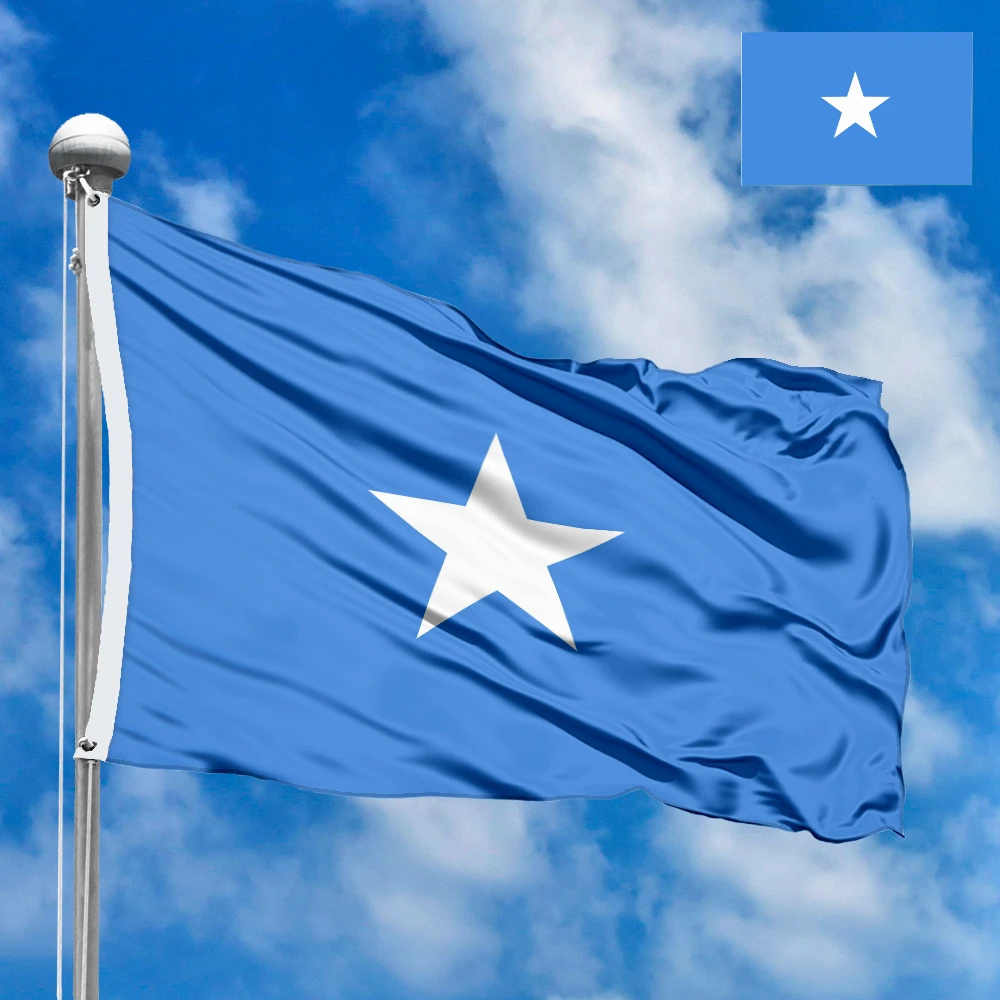

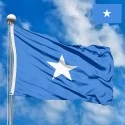
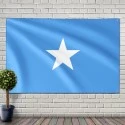
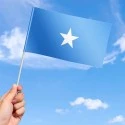
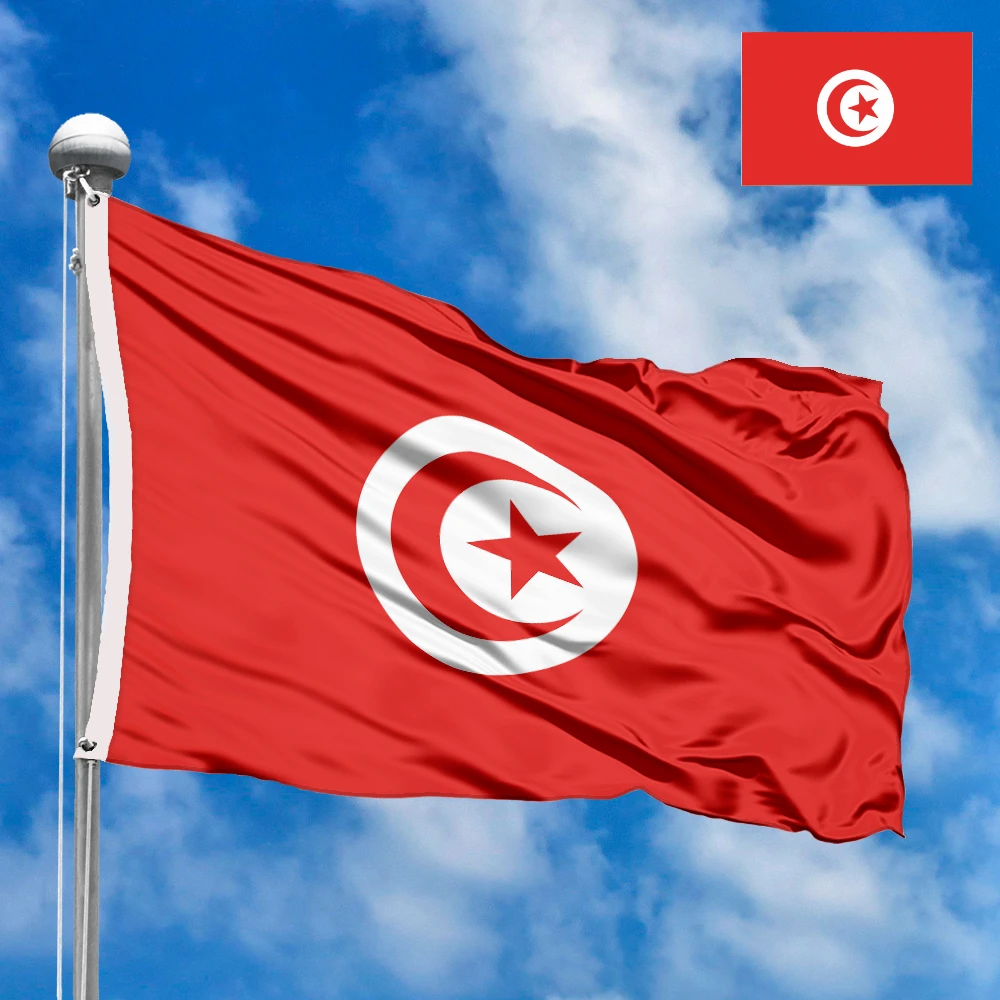
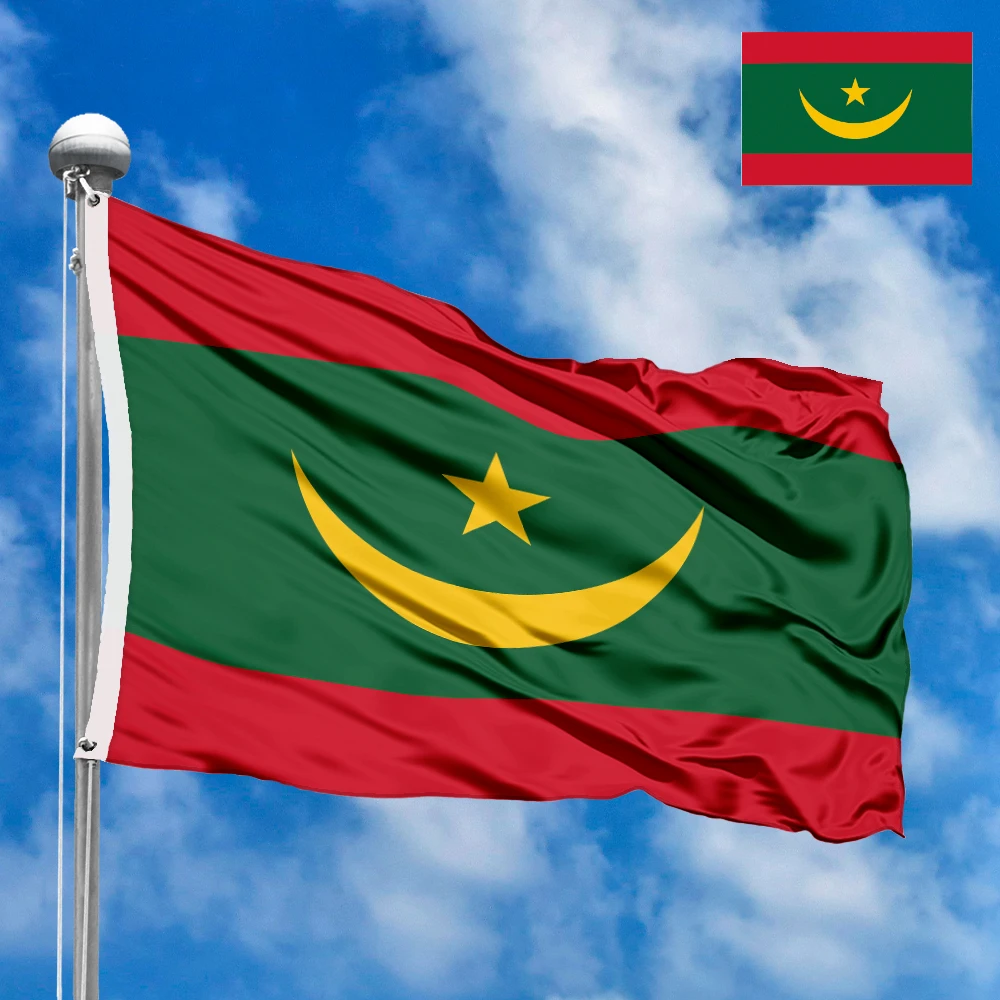

 Waving flag
Waving flag
 Sizes:
Sizes:
 Round flag
Round flag
 Sizes:
Sizes:
 Rectangular flag 2:3
Rectangular flag 2:3
 Sizes:
Sizes: